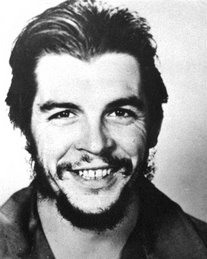De: Pio Celestino [mailto:plcefe@aol.com]
Enviado el: jueves, 22 de febrero de 2018 18:50
Para: carlherch@hotmail.es
Asunto: Mumía Abú-Jamal: ÚRSULA LE GUIN: 1929 - 2018 (English follows)
Por favor comparta este artículo con sus contactos. ¡Gracias!
ÚRSULA LE GUIN: 1929 - 2018
Mumía Abú-Jamal
24-1-2018
Su nombre fue Úrsula K. Le Guin, nació en Berkeley, California, el 21 de octubre de 1929, hija del distinguido antropólogo, Alfred Kroeber.
Úrsula Le Guin es conocida por sus novelas, muchas de ellas en el campo de la ficción científica, en las cuales ella creaba nuevos mundos de los fragmentos de éste. .
Sus libros eran con frecuencia ligeramente velados comentarios sobre los males de las guerras imperiales y de la fiebre del militarismo.
Entre sus libros: The Word for World is Forest, (La Palabra por el Mundo es Bosque), es una obra alegórica de 1969 en la que discute la Guerra en Viet Nám; la obra de 1971, The Dispossessed (Los Destruídos) imagina una resistencia anarquista mundial contra los abusos de los ricos; y otra de 1971: The Lathe of Heaven, (Cerca del Cielo) libro del que ofrezco las líneas que siguen; y que revelan el sabor de la obra:
"Él había crecido en un país manejado por políticos que mandaban a pilotos a comandar aviones bombarderos para matar a los bebés y así hacer el mundo seguro para que los niños puedan crecer". [ch.6]
Las novelas de Le Guin no solo conmovían a lectores de ficción científica.
En el mundo de la filosofía, sus obras proponían profundas preguntas sobre la naturaleza básica de la sociedad neoliberal.
En "The Ones Who Walk Away from Omelas", (Los que Huyen de Omelas), Le Guin crea un mundo donde todo está aparentemente bién, a escepción de un secreto y pequeño cuarto, oscuro y pestilente, donde una pequeña niña es torturada y sufre sola, pero que de alguna forma su tortura hace posible el bienestar social de los residentes de Omelas.
La filósofa Elizabeth Pivonelli empieza su libro, Economías del Desamparo, (Economies of Abandonment), con la horrenda visión de Úrsula Le Guin como la base de su introducción titulada, La Niña del Cuarto de las Escobas ("The Child of the Broom Closet"), como una alegoría del moderno mundo Occidental y del neoliberalismo, que se basa en la violencia invisible del capitalismo y de sus monstruosos apetitos.
Úrsula (Kroeber) Le Guin ganó, entre otros galardones, el codiciado Premio Hugo por su excelencia como escritora de ficción científica.
--© '18maj
Traducción libre del inglés enviado por
Fatirah Aziz, Litestar01@aol.com,
hecha en REFUGIO DEL RIO GRANDE, Texas.
Este mensaje le llega porque Usted está en la lista de REFUGIO DEL RIO GRANDE. Si no quiere seguir recibiéndolo, favor de enviarnos un mensaje pidiendo que borremos su subscripción. Gracias.
========================================================================
Please share this article with your contacts. Thanks!
URSULA LE GUIN: 1929 - 2018
[col. writ. 1/24/18] © '18 Mumia Abu-Jamal
Her name was Ursula K. Le Guin, born in Berkeley, California, Oct. 21, 1929, the daughter of a noted anthropologist, Alfred Kroeber.
But her name is known from her novels, many in the realm of science fiction, which weaved new worlds from the shards of this one.
Her books were often thinly veiled commentaries on the evils of Imperial war, and the fevers of militarism.
Among her works: The Word for World is Forest, a 1969 allegorical work that took on the Vietnam War; the Dispossessed (1971) which imagined an anarchistic global resistance to the depredations of the rich; and another 1971 work: The Lathe of Heaven, an excerpt of which reveals its flavor:
He had grown up in a country run by politicians who sent the pilots to man the bombers to kill the babies to make the world safer for children to grow up in. [ch.6]
Le Guin's work didn't just thrill readers of science fiction.
In the rare air of philosophy, her work appeared to probe questions about the deep nature of neoliberal society.
In her book "The Ones Who Walk Away from Omelas", Le Guin creates a world where all is seemingly well, except for in a dark, fetid closet, where a little child suffers, alone, but somehow, her very tortures grant societal well-being to Omelas' residents.
Philosopher Elizabeth Pivonelli opens her book, Economies of Abandonment, with Le Guin's harrowing vision as the basis of her opening introduction, entitled "The Child in the Broom Closet", as an allegory of the modern West and neoliberalism, which rests upon the invisible violence of capitalism and its monstrous appetites.
Ursula (Kroeber) Le Guin won the coveted Hugo award for her science fiction excellence.
--©'18 maj.
en estos links verás entrevistas y video sobre nuestro museo.
España nos entrevistó http://www.elmundo.es/f5/comparte/2017/10/08/59da50d6ca4741eb708b467f.html
Tania la argentina que murió en la guerrilla del Che https://youtu.be/mgtVfWNyGAA
la revolucion en Argentina que quiso el Che Museo Ernesto Che Guevara Primer Museo Suramericano en Buenos Aires CABA Argentina
https://www.youtube.com/watch?v=jGPLj1nGEsY
Argentina: El Che lives on! Get lost in Buenos Aires ... Izquierdista entusiasta, y compañero revolucionario Eladio Gonzalez muestra el contenido de su afamado museo Che Guevara en Caballito, Buenos Aires.. |
informó el Museo " ERNESTO CHE GUEVARA " de Caballito, CABA
calle Rojas 129, esq. Yerbal, Buenos Aires (AAC 1405) Argentina
Visitar lunes a viernes de 10 a 19 hs. (corrido) – entrada libre y gratuita
Escuela de Solidaridad con Cuba " CHAUBLOQUEO "
Registro donantes voluntarios de Células Madre (INCUCAI)
Coordinador ex Mesa Vecinal Participativa en Seguridad de Caballito
Tel. 4 903 3285 Irene Rosa Perpiñal - Eladio González (Toto)
email - museocheguevara@fibertel.com.ar
Blog museo http://museocheguevaraargentina.blogspot.com/ accidentes - http://nomuertesevitables.blogspot.com protege hijos y nietos, aportá ideas y experiencias.
Facebook https://www.facebook.com/museoernestocheguevara/#
ó https://www.facebook.com/eladio.gonzalez.376
Lea libro Cuba Existe, es Socialista y No está en Coma del Arq. Rodolfo Livingston en http://estudiolivingston.com.ar/libros/cubaexiste.php y emocionate.
en Sao Paulo Brasil buscá http://museuvirtualcheguevara.blogspot.com.br/"
Tango nuestro baile https://www.facebook.com/manuel.gonzalezmeg?hc_ref=NEWSFEED
¡ Salven a los argentinos !..... "las ballenas".
Las Islas Malvinas fueron, son y serán siempre ARGENTINAS.
Guantánamo es cubano ¡ fuera los norteamericanos de allí ! invasores colonialistas como los ingleses.



